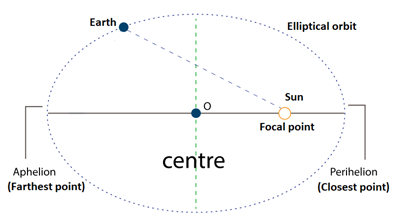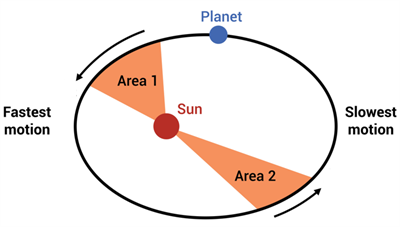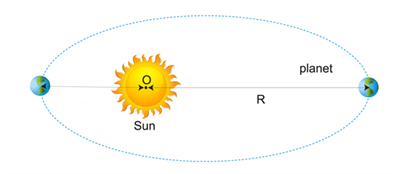
PUMPA - SMART LEARNING
எங்கள் ஆசிரியர்களுடன் 1-ஆன்-1 ஆலோசனை நேரத்தைப் பெறுங்கள். டாப்பர் ஆவதற்கு நாங்கள் பயிற்சி அளிப்போம்
Book Free DemoJohannes Kepler, a German astronomer, formulated three laws of planetary motion in early 1600. With the help of the data collected by his mentor, Tycho Brahe, Kepler was able to summarise the planet's motion in a Sun-centered solar system.
Unfortunately, Kepler's attempts to explain the fundamental causes of planetary motions are no longer recognised. But, the laws themselves are still regarded as accurate descriptions of any planet or satellite's motion.
Laws of planetary motion:
The three Kepler's laws of planetary motion are given below.
1. First law or the law of ellipses:
All planets revolve around the Sun in elliptical orbits, with Sun at one of their foci.

The law of ellipses
2. Second law or the law of equal areas:
The line connecting the planet and the Sun covers equal areas in equal intervals of time.

The law of equal areas
3. Third law or the law of harmonies:
The square of the time period of revolution of a planet around the Sun is directly proportional to the cube of the distance between the sun and the planets.

The law of harmonies